
Shellmounds, Shipyards, and Exploding Islands
These are celebratory times for the San Francisco Bay. Last year the Bay Bridge turned seventy-five and in May of this year the Golden Gate Bridge follows suit. In 2013, these two sister bridges will welcome a brand new appendage, the East Span of the Bay Bridge. In concert with this engineering feat—the East Span will be the largest self-anchored suspension span bridge in the world—the Bay will host the America's Cup sailing competition; the San Francisco Port will commemorate its sesquicentennial; and a spate of cultural institutions will organize events, tours, and exhibitions.
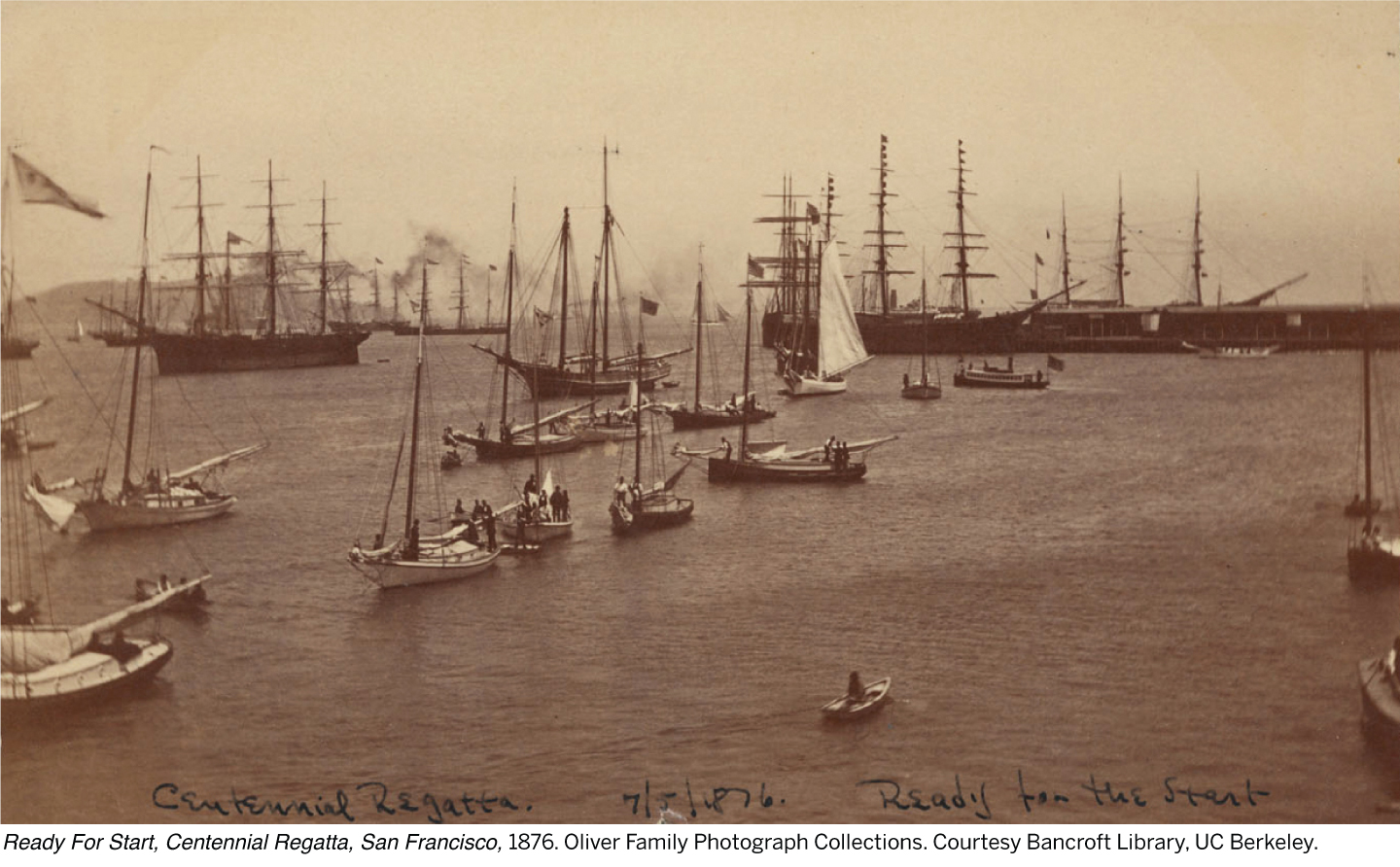
OMCA’s contribution to this fanfare is a major exhibition focusing on how the Bay informs the lived experience of Californians. Co-organized by curators from the fields of history, science, and art, the exhibition will tackle humans' complex relationship to the Bay—by turns worshipful and destructive, treated as a symbol of opportunity, a source of livelihood or sustenance, the site of recreation, imprisonment, and travel—or just a scenic view.
Last week OMCA convened a symposium to flesh out nascent ideas for the exhibition. Museum professionals don't spend as much time as they'd like discussing big ideas, mired as they are in the minutia of loan forms and installation protocols. The convening was an opportunity to delve into questions at the heart of the exhibition:
• What stories most urgently need to be told?
• What will visitors gain from visiting this exhibition?
• How can you make visitors think seriously about the natural world while they're standing in a concrete museum?
The symposium guests included eight panelists: scientists, artists, historians, museum professionals, designers, OMCA staff, and the three exhibition curators: Louise Pubols and René de Guzman from OMCA, and Robin Grossinger from the San Francisco Estuary Institute. Surrounded by lengths of white butcher paper pinned to the wall and filled with colored notes, the convivial group snacked on egg rolls and shared areas of their own research and interest. The exhibition team listened keenly. They were eager to note specific content ideas, but part of exhibition development is also gauging passion: if the speaker raised her voice or flashed his eyes or spoke with measured emphasis, and if the other participants responded in kind, the topic passed the first litmus test of relevancy to the public.
One topic that immediately sparked passionate dialogue was islands. Haley Pollack, a scholar writing about Angel Island's Immigration Detention Center and historical memory, started off the afternoon's brainstorming session. "Islands are an incredibly resonant concept,” she said. “Can we tell the story of the Bay through the story of the Bay's islands?"
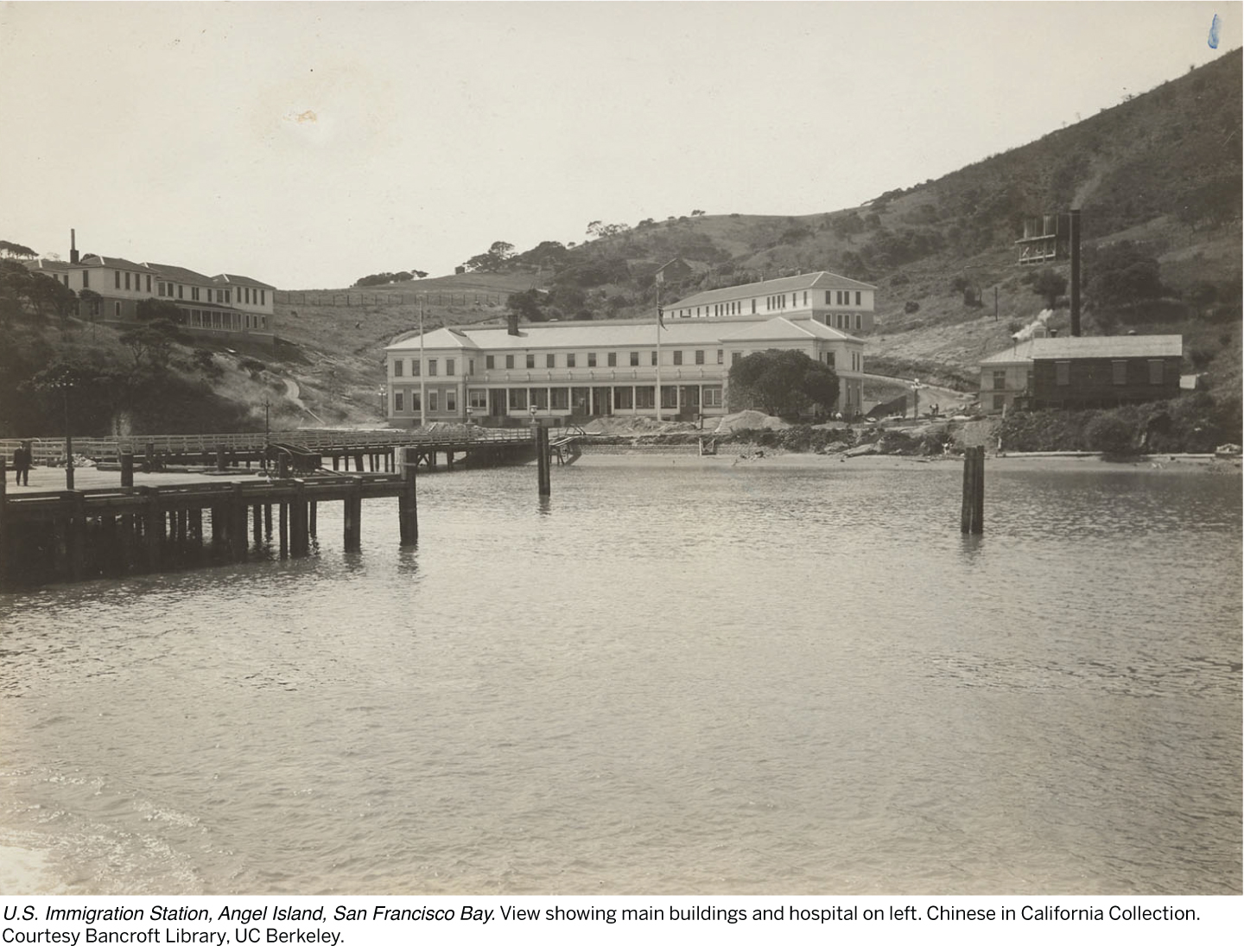
There are some thirty-one islands in the San Francisco Bay, five of them inhabited, each with a unique history that merges the natural and cultural worlds. There are the immigration travails of Angel Island, the ghoulish tours of Alcatraz, and the oddity of Red Rock Island, which is privately owned by a gem dealer in Thailand and currently for sale.
Several of the smaller islands are, strictly speaking, large rocks. Among them are several ghost rocks, or islands that once dotted the Bay waterscape but no longer exist. 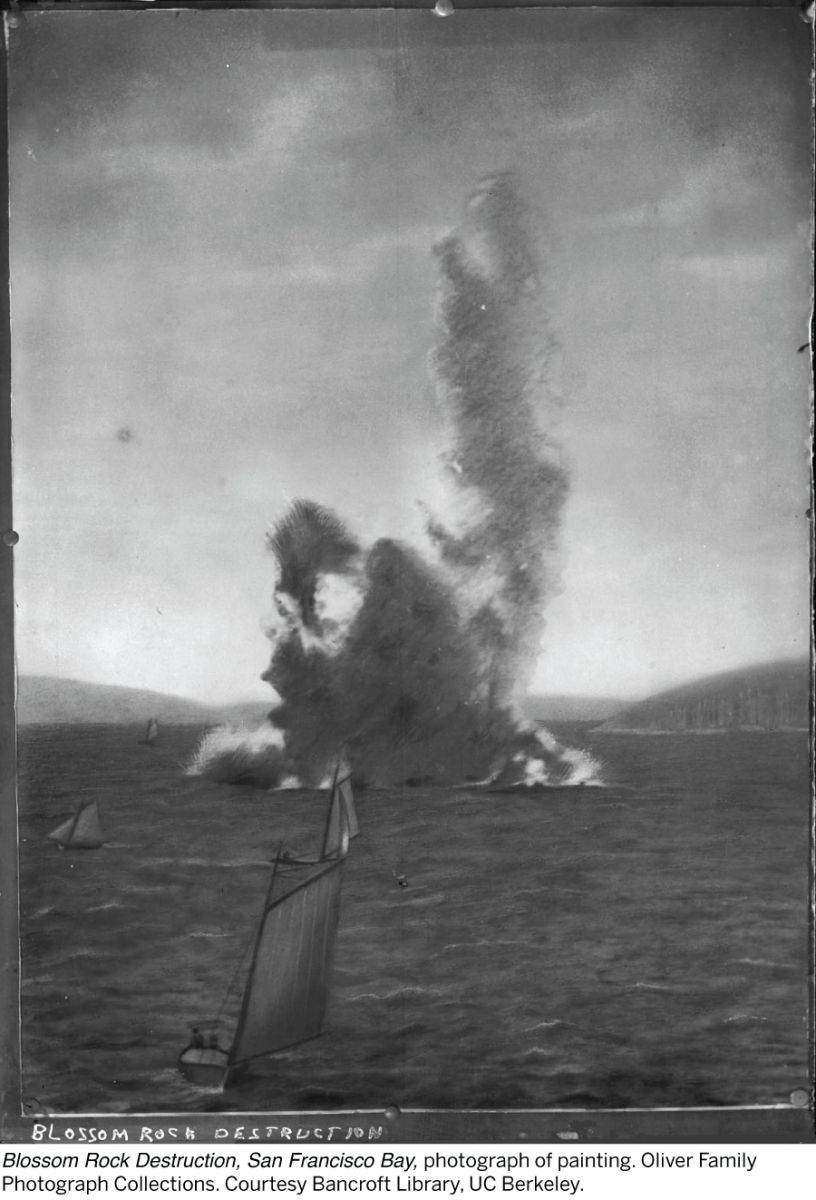 Blossom Rock, for instance, was a land mass submerged just five feet below water surface that for many decades wrecked destruction on any hull that trawled its surface. A ship captain noted in the early 1800s that it was possible to avoid the treacherous rock by precisely aligning the tip of Yerba Buena Island between two giant redwood trees in the East Bay hills and navigating thusly. When the two trees were logged in 1851, his directions were futile, and Blossom Rock became critically dangerous to ship traffic. In 1867, the top of the island was dynamited; a second, deeper explosion took place in the 1930s, to accommodate ever larger ships.
Blossom Rock, for instance, was a land mass submerged just five feet below water surface that for many decades wrecked destruction on any hull that trawled its surface. A ship captain noted in the early 1800s that it was possible to avoid the treacherous rock by precisely aligning the tip of Yerba Buena Island between two giant redwood trees in the East Bay hills and navigating thusly. When the two trees were logged in 1851, his directions were futile, and Blossom Rock became critically dangerous to ship traffic. In 1867, the top of the island was dynamited; a second, deeper explosion took place in the 1930s, to accommodate ever larger ships.
Arch Rock, a small island and bird habitat white with several centuries worth of guano, met a similar fate, in 1901. (As reported by the New York Times, the explosion was the second largest ever in the United States.) Such anecdotes speak to the ways in which the Bay has been subject to human interventions for millennia.
Matthew Coolidge, founder of an education and research organization called the Center for Land Use Interpretation, argued for the preeminence of Treasure Island. "[Treasure Island] is really the übersite when we talk about the Bay—it's an artificial island in the Bay built from scratch for an exposition to celebrate the Bay [Golden Gate Exposition of 1939-40]. Doesn't get much more Bay than that."
After its construction, Treasure Island subsequently became a naval base, then a popular location for film shoots. Now it’s home to several housing developments, many of them low-income housing. Despite the residential development, however, Coolidge noted that "Treasure Island is completely seismically unsound."
Like several other landmasses around the Bay, Treasure Island is built entirely on fill, a combination of soil and rocks moved from elsewhere to create solid land where none exists. Treasure Island’s fill came from the source most readily available—it was dredged from the bottom of the Bay. (Interestingly, this was landmass twice dislocated, as the dredge was partly composed of sediment runoff from late-19th century hydraulic mining operations in the Sierra Nevada Mountains.) Another symposium attendee, the coastal geomorphologist Jeremy Lowe, wryly pointed out that the Bay’s "full income" housing is located on Treasure Island’s more seismically sound neighbor, Yerba Buena Island.
Pondering this, the group suggested that the exhibition include a section called "Oops!" Chuck Striplen, a scientist with the San Francisco Estuary Institute and a member of the Amah Mutsun Tribal Band, enthusiastically offered the history of Emeryville as a prime candidate for the “Oops” section. Clipping through several centuries, Striplen narrated the ill-fated trajectory of the Emeryville Shellmound, a burial ground for the dead and a deposit of shellfish and animal remains. Before its destruction, the Emeryville Shellmound was likely the largest shellmound in the Pacific Rim, and stood about four stories tall.
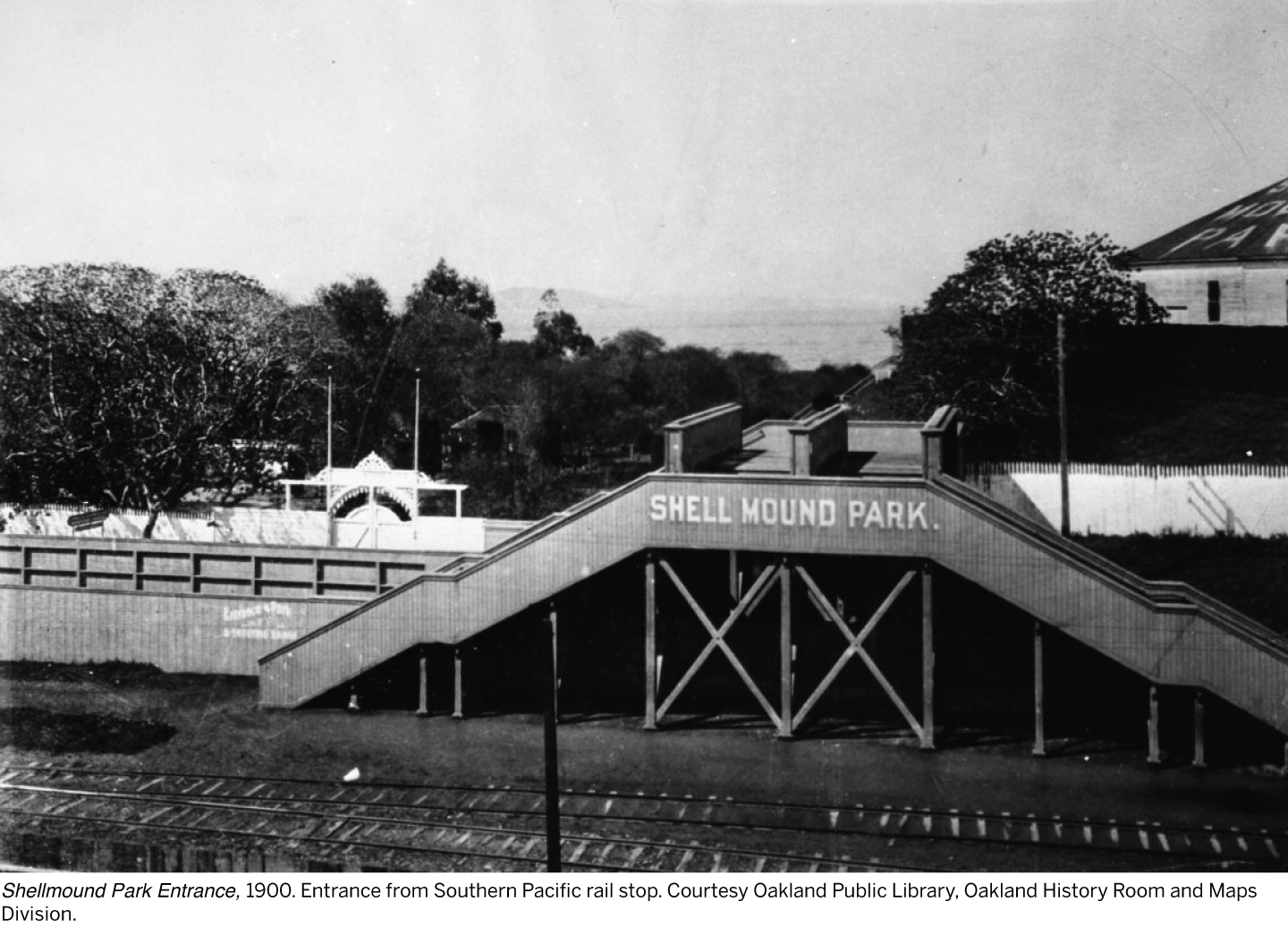
In the 1870s, a dance hall was built on top of the mound, as part of a popular turn-of-the-century amusement park with the facile name of "Shellmound Park." The park was razed and the mound partially leveled in 1924. The site was then used for a paint factory. Industrial waste poisoned the remaining mound deposit, which was eventually declared hazardous waste and trucked to Central Valley landfills to clear room for commercial development. Emeryville is now the new mecca of East Bay shopping…with a thoroughfare inevitably named "Shellmound Street."
The story of industry will be key to the exhibition. The Bay Bridge is in many ways the superlative icon of the American industrial landscape, though it’s not the only homegrown engineering coup—there's also the Aquaduct and the BART tunnel. Grossinger said that the history of Point Richmond is an even earlier example of the optimism that infused construction on and around the Bay. Point Richmond was originally an island. Developers identified the area as a spot where a contiguous landmass could be useful in 1895. Five years and several tons of fill later, Richmond Point became the terminus of the Santa Fe Railroad Company, and soon after the headquarters of Standard Oil (now Chevron).
.jpg)
Tim Doughtery, from the Bay Conservation and Development Commission, argued to the group that industrial history is one of the exhibition’s best entrance points for talking about the social and cultural histories that define the Bay Area, and particularly the East Bay. “The story of industry in the Bay is also the story of shipbuilding. When you’re talking about the shipbuilding industries, then you’re talking about the major migrations and population booms of Northern California history. And then you’re talking about race and class.”
.jpg)
The conversation meandered from building on fill to dumps to East Bay sewage facilities, to the fact that the Bay was itself a toilet of sorts for many years. The Bay Area’s earliest plumbing systems channeled untreated sewage directly into the Bay, and in fact, until the 1960s, points along the Bay’s shoreline posted warning signs: “Sewage Pollution. Do not bathe or picnic within 100 yards of this area.” Exhibition assistant Jennifer Miller reported that the story of "where your poo goes" tested well with OMCA focus groups. Coolidge wasn’t surprised. "It's timely,” he pointed out. “The public is thinking about waste and more open to knowing where their waste goes."
Jon Christensen, from the Bill Lane Center for the American West at Stanford University, suggested that the exhibition focus on the Golden Gate Bridge—"it's the subject of hundreds of artworks, it's the Bay Area's entrance to the world, it's the passage point of everything coming in or out."
Good reasons all, but a somewhat blasphemous suggestion to folks whose loyalties lie with Oakland. It's the Bay Bridge that's Oakland’s own: the underdog bridge, the "other" bridge, the bridge trafficked by 270,000 cars a day without a camera-laden tourist in sight. (The new East span will feature bike lanes.)
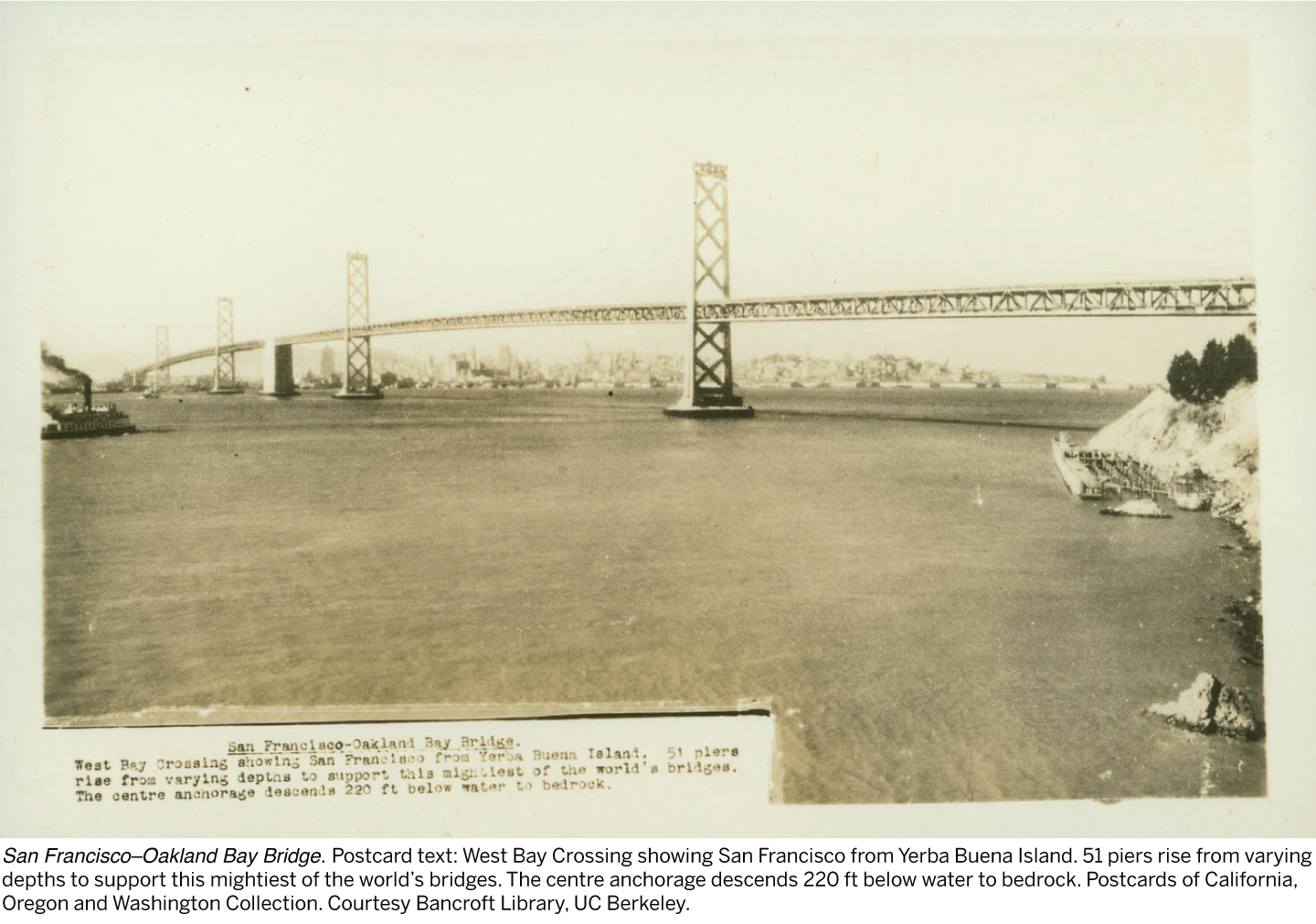
At the end of the afternoon, the discussion circled back to the million-dollar question: "What do we want visitors to come away with?"
"The situation we have now," said Lowe, "is the product of some planning, some oops, and some neglect. I want to empower people to become stakeholders in the future of the Bay."
"My big-picture goal,” said artist Susan Schwartzenberg, representing the Exploratorium, “would be to make people understand the tentacles of the city, and how their lifestyle is implicated in shaping the landscape."
"Let's talk about how to achieve a new sacred geography of the Bay," suggested Christensen. He was borrowing an idea articulated earlier, when Striplen described the Native community’s historical relationship to the Bay. "Except a sacred geography that's not religious. Um, is that possible?"
The exhibition’s conceptual framework may be inchoate for a few more months, but Pubols is definitive on one subject: "This exhibit needs to capture complexity. I want people to understand that there are no easy answers."
Symposium attendees included: Shirl Buss, Matthew Coolidge, Jon Christensen, Tim Doherty, Darcie Fohrman, René de Guzman, Marina McDougall, Jennifer Miller, Evelyn Orantes, Halley Pollack, Louise Pubols, Susan Schwartzenberg, Leslie Stone, and Chuck Striplen.
Projects








